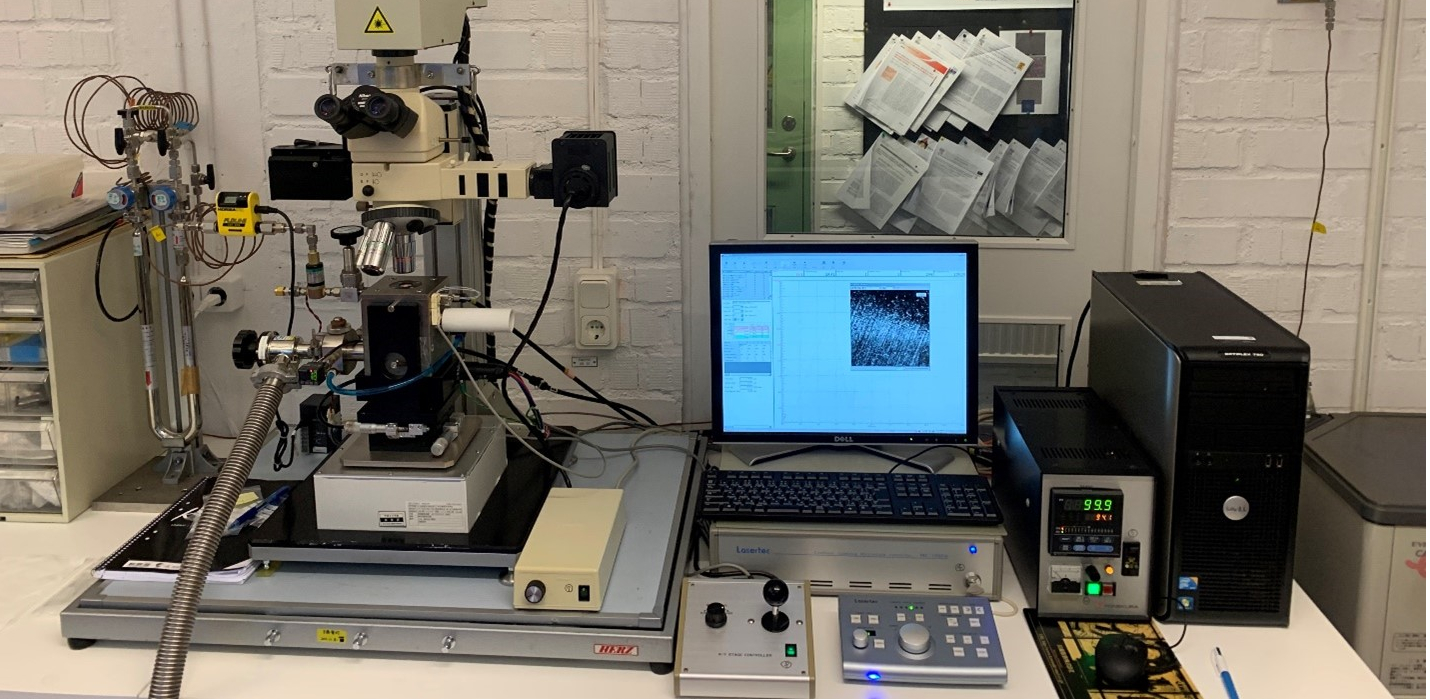High temperature confocal laser scanning microscopy (HT-CLSM)
High temperature confocal laser scanning microscopy (HT-CLSM) allows the in-situ study of phase transformations at high temperatures for diverse materials.

The high temperature confocal laser scanning microscopy (HT-CLSM) provides the opportunity to perform in-situ direct observations of e.g. crystallization, solidification, and other phase transformations at high temperatures for metals and ceramics. The investigated sample is positioned in a crucible, placed on a specimen stage with thermocouples attached for temperature control. The furnace is heated by a halogen infrared lamp, and the sample is placed at the focal point of the infrared beam which is reflected by the gold coated ellipsoidal furnace chamber. The imaging of the sample surface is conducted with the use of a He-Ne scanning laser beam and a confocal pinhole aperture enabling excellent contrast and resolution along the laser beam direction (Z direction). The laser power is about 1.5 mW in general and operates in the red, blue and violet wavelength range. When performing Z scans 3D reconstructions of the surface can be constructed, but for fast imaging of e.g. phase transformations Z scanning is not adjusted much, instead the surface relief between parent and product phase is observed at the almost fixed Z distance in real-time.
The modern HT-CLSM instruments can reach maximum temperature of 1600 ºC using heating rates up to about 1000 ºC/min. Rapid cooling at a certain temperature range with a maximum rate of 1000 ºC/min. These thermal testing capabilities means the HT-CLSM is suitable for analysis of various high temperature processes, for example, non-metallic particle motion, solidification, metal-slag reaction, crystallization, etc.
More information about the equipment:
High-temperature confocal laser scanning microscopy (HT-CLSM)
